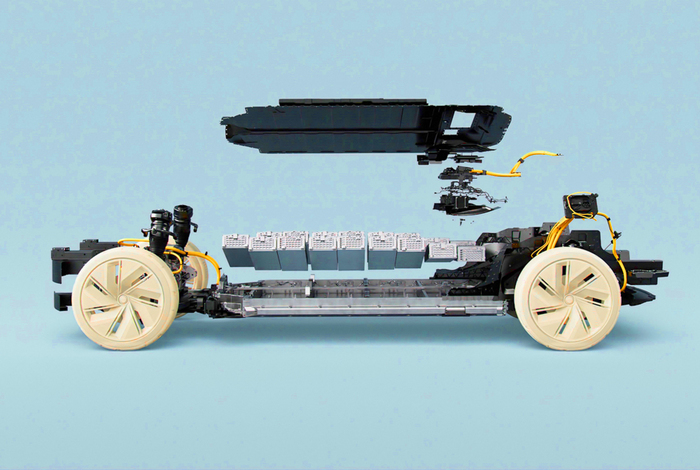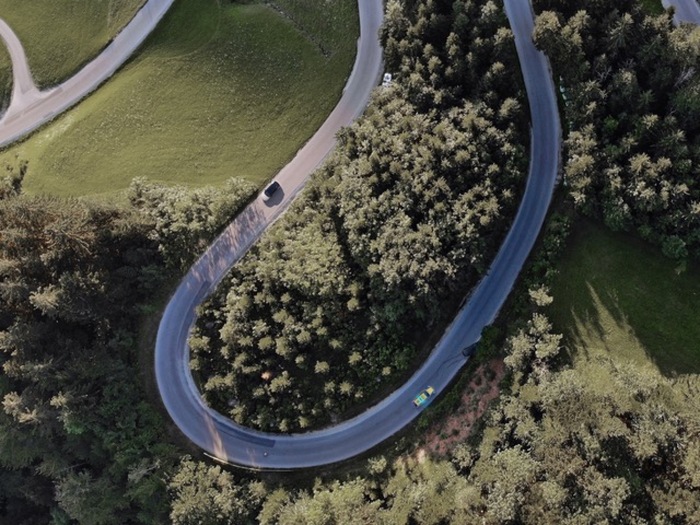Enlarge image
Photo:
Volvo
General information about the model:
Because of its angular shape, the 850 is considered by many to be the last real Volvo. The upper middle class model introduced in 1991 broke with tradition several times. For the Swedes, rear-wheel drive was previously standard, with the 850 a large Volvo with front-wheel drive rolled off the line for the first time. In addition, its dimensions were compact compared to the spacious 200 or 700 series. Instead, the power exploded under the bonnet: Instead of the tried and tested four-cylinder, the 850 was newly designed, transversely installed five-cylinder.
Even the basic unit with a displacement of 2.5 liters offered 140 hp, the 2.5 20V even 170 hp.
In 1993, Volvo followed up with brutal turbo versions for those times.
The T-5 made 226 hp, T-5R and R with overboost then even 241 and 250 hp.
It is a time when BMW and Mercedes drivers start to be amazed when they are suddenly overtaken by such racing Volvos.
“Poor performance was never a problem with the 850.
The front-wheel drive, on the other hand, does, ”says Dieter Hengstwerth from the Volvo Club Germany.
When towing a trailer - for example when launching a boat - the 850 quickly reached its limits.
Therefore, Volvo soon submitted an all-wheel drive version.
The notchback sedan played a minor role in Germany.
The station wagon, which was sold from 1993 onwards, was much more popular, especially as it did not cost a mark extra.
The SIPS (Integrated Side-Impact Protection System) celebrated its premiere on the 850.
In addition, there was an automatic height adjustment of the front seat belts and the complex torsion beam rear axle (Deltalink) for better driving comfort.
Even when it comes to the equipment, Volvo did not spoil it.
Even basic models had anti-slip control, electric windows, front seat heating and, from 1995, side airbags as standard.
For a surcharge, the 850 could be lavishly upgraded, for example with leather velor seats, cruise control, air conditioning or burl wood decor.
After almost 717,000 units had been built, production of the Volvo 850 ended in 1996. The successors, the S70 and V70, were initially built on the tried and tested 850 platform.
She lived on in the C70 Coupé and Cabriolet until 2005, before the new owner Ford finally crushed her.
Why that of all people?
Less useful, but chic and fast: the 850 was Volvo's first lifestyle station wagon.
"From the point of view of purists, the box should never have been built," says Dieter Hengstwerth.
For decades, Volvo was called a perhaps sedate, but gigantic station wagon with rear-wheel drive.
The result: The hip, but front-wheel drive, rather small 850 was at best tolerated in the "scene", but not really appreciated.
"Nobody turns around at old Volvo meetings," says Dieter Hengstwerth.
Unless you roll up with a T5 or T5R, especially the yellow T5R are eye-catchers.
For those who can live with compromises, the 850 can be a good choice.
Driving characteristics and engine performance are fine to excellent for a nineties car.
Above all, the technology and sheet metal quality are still rock solid, mileage of 300,000 kilometers and more is nothing special.
In addition, the car is not over-electronic and easy to repair, unless the clutch overhaul is pending.
“So no comparison to the huge electronic mish-mash of modern cars that nobody needs any more,” says Dieter Hengstwerth.
For Volvo classic enthusiasts, the good old days ended in 1999 when the traditional brand was taken over by Ford.
"You can still buy early Volvo V70s, but everything that came afterwards was nothing more than an overpriced Ford Mondeo," says Hengstwerth.
Today the Volvo brand belongs to the Chinese vehicle group Geely.
Availability:
The offer on the used car portals is large and ranges from usable to crap.
Because of the expensive clutch repairs, Volvo 850s are likely to be rejected at around 200,000 kilometers.
Station wagons predominate on the market, mostly with manual transmissions.
Good R and TR models are usually in the hands of enthusiasts.
Always stay up to date?
Driving reports, analyzes, the latest news: you won't miss any articles from the Mobility section of SPIEGEL.
How to enable your notifications
Spare parts supply:
The supplier Skandix still has many spare parts in its range and also supplies workshops.
There you are often overwhelmed with an 850 if the right connector for reading the OBD1 onboard diagnosis is missing.
Common wear parts are easily available, and there are also new fenders and tailgates.
In addition, many components from the first Volvo V70 fit.
Spare part prices (exemplary):
Original fender: approx. 440 euros
Fuel pump: approx. 70 euros
Set of front brake discs: from approx. 100 euros
Silencer exhaust: from approx. 130 euros
Weak points:
Rust problems are rare because of the good corrosion protection. But almost all 850 that are sold have a maintenance backlog. The biggest construction site is a malade clutch in a manual transmission: It means three days of workshop and costs around 1500 euros. If you want to avoid this annoyance, choose an 850 with the robust automatic. The front axle is also prone to aging, where joints, bearings and bushings wear out. Another weak point is the ABS control unit (cold solder joints). The workshop then changes wheel sensors to see if it's their fault.
The five cylinders are durable, provided the timing belt is changed regularly.
This was only 22 millimeters thick in the first model year and was then changed to 24 millimeters.
In addition, cheap oil is bad, you should follow the Volvo recommendations.
Fading rear lights are a typical 850 disease, and adequate replacement is expensive.
The paintwork can also fade ugly with age, especially on the red or yellow 850. Caution is advised with tuned cars, despite the rich performance ex works, even the turbo models were often chip-tuned afterwards.
Then prefer a 2.5 liter without turbo, but in its original condition and with a comprehensible maintenance history.
Price:
Rocked everyday noodles with residual TÜV are available from 500 euros.
You can find decent copies for as little as 3500 euros.
The fast turbos go into the five-digit range, for good R and T5-R are now 20,000 euros and more.
Contact points on the Internet:
www.volvoclub-deutschland.de
https://www.skandix.de










